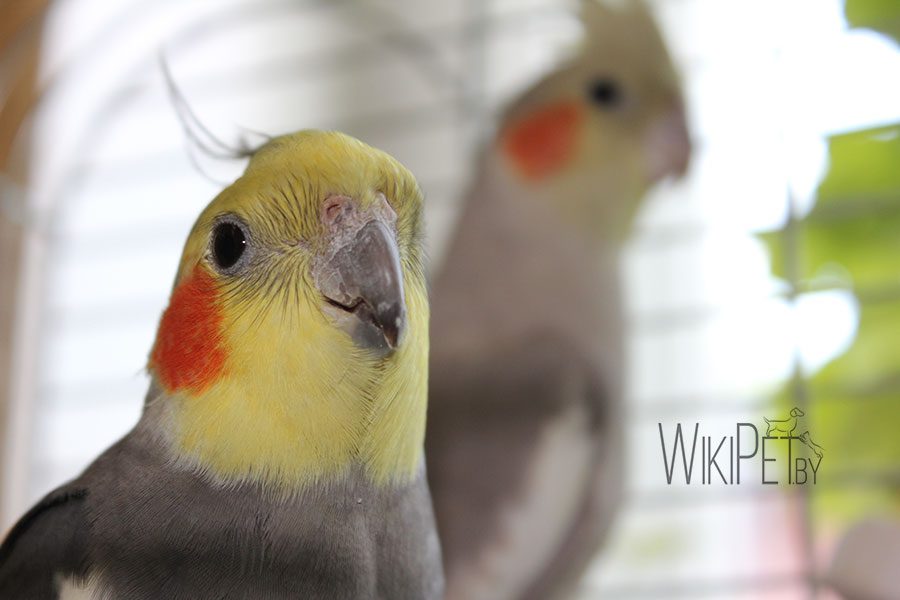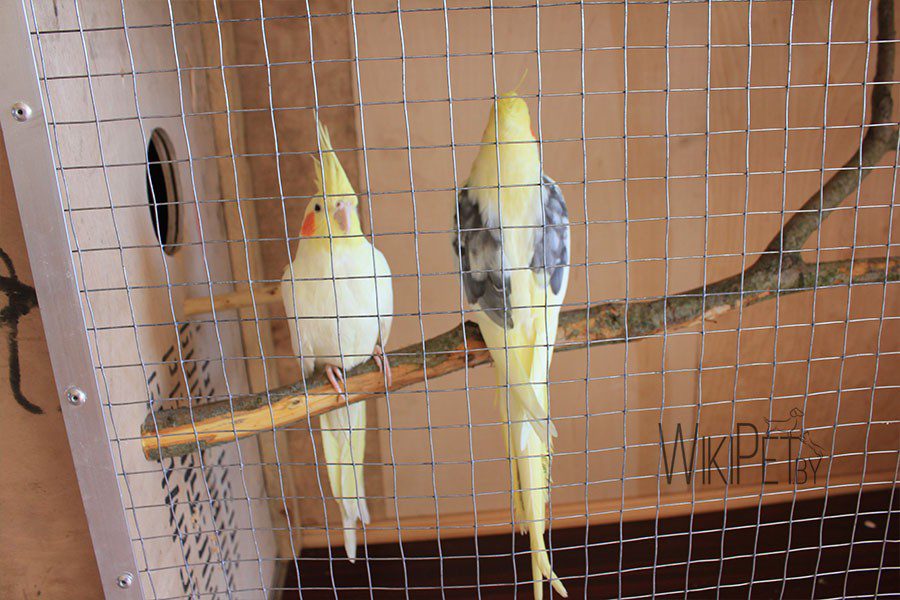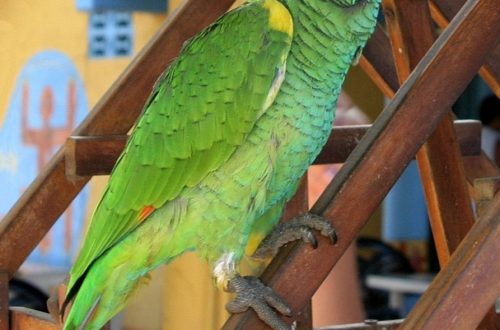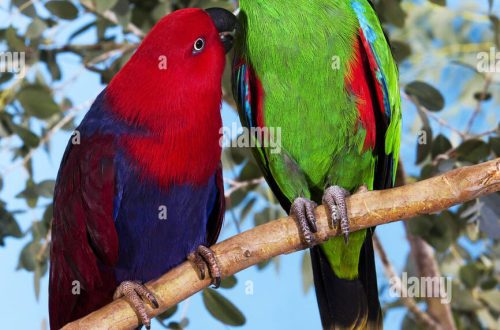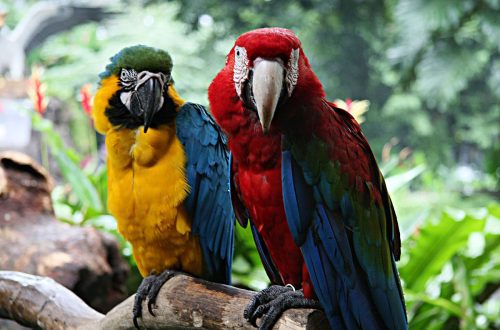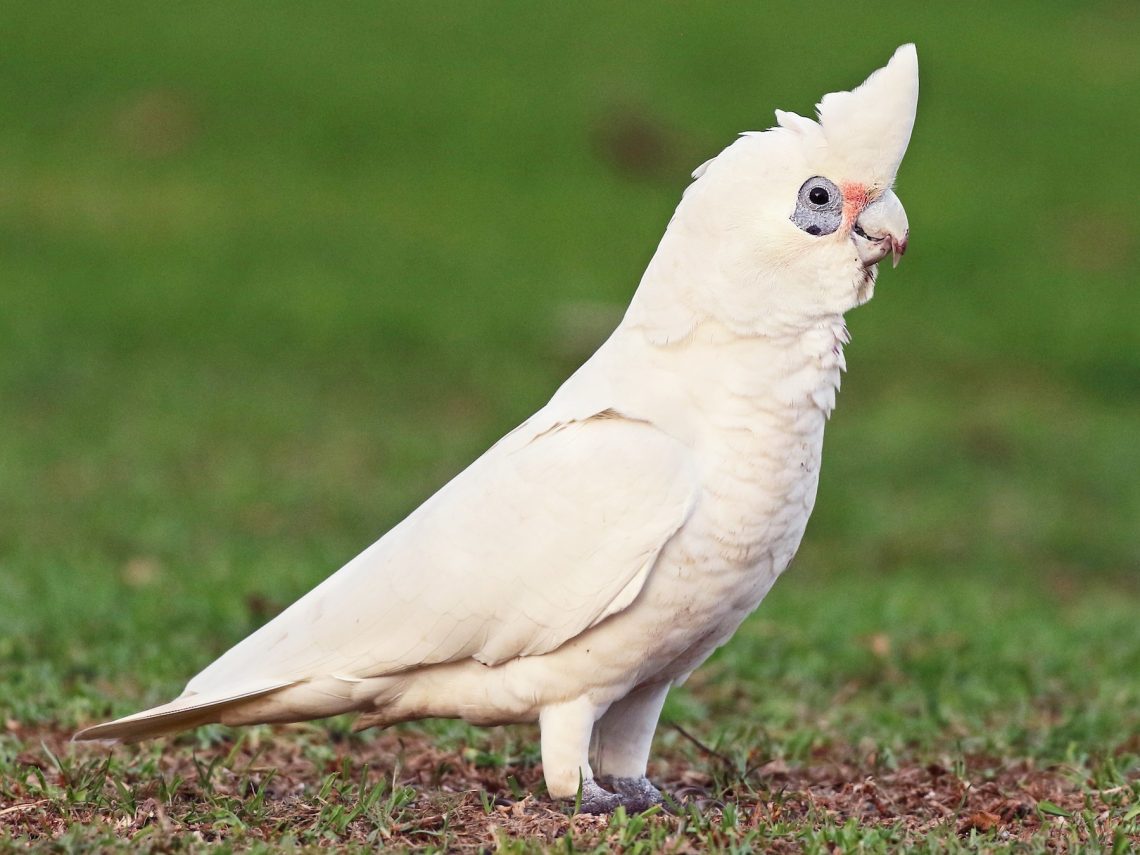
Corella
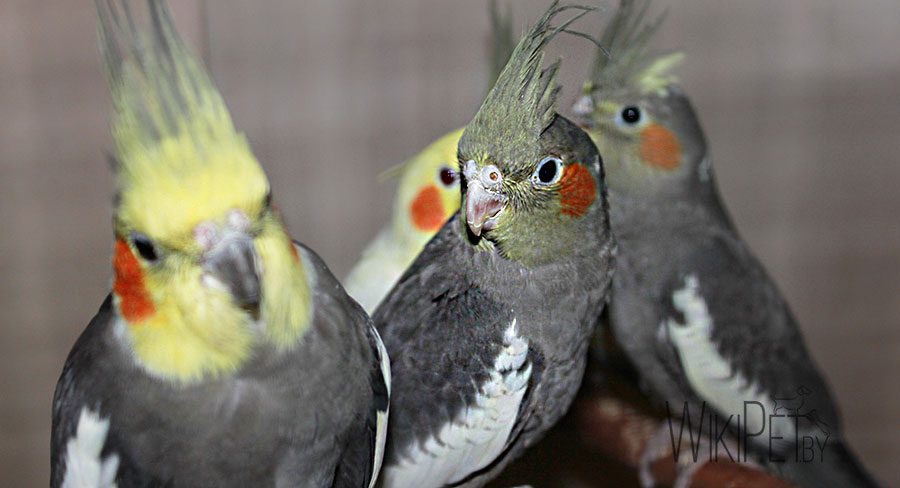
| Corella or nymph | Nymphicus hollandicus |
| Order | Parrots |
| family | Cockatoo |
| Race | cockatiels |
Contents
APPEARANCE CORELL
Corellas are medium parrots and have a body length of about 33 cm and a weight of up to 100 grams. The tail is long relative to the body (about 16 cm), a crest on the head. Orange spots on cheeks. The beak is medium in size. Paws are grey. Birds are characterized by sexual dimorphism, males and females of a standard color can be distinguished externally by color. Only a mature bird over the age of a year can be distinguished by color.
How to distinguish cockatiels of different sexes?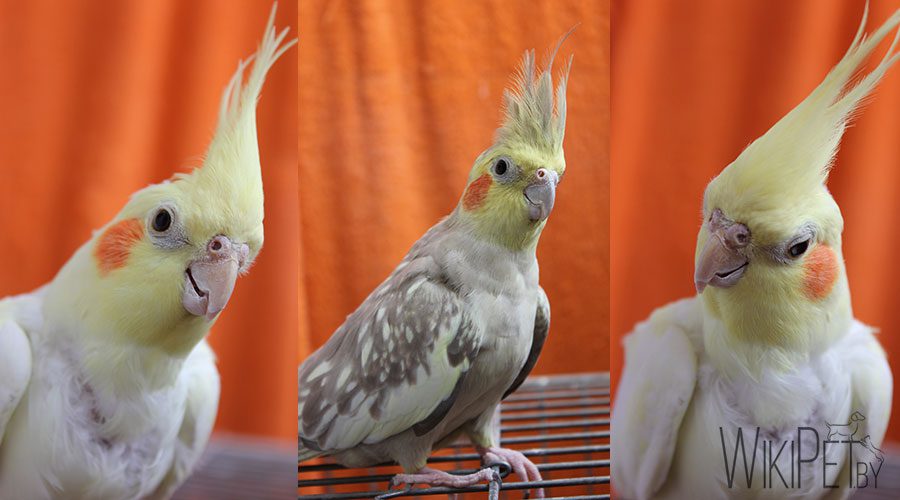
If this applies to the “wild” color and some others, then upon reaching puberty, the male and female have a different color. The main color of the body of the male is gray-olive, on the head there is a bright yellow mask and crest. Flight and tail feathers are black. The shoulder is yellowish white. The females are more modestly colored. The color is brown-gray, the mask on the head is blurry and barely visible. The orange spots on the cheeks are dull. On the inside of the flight feathers there are oval spots. However, this method of sex determination is not suitable for colors such as albino, white, lutino, pied and other colors.
How else to determine the sex of a cockatiel parrot? Before puberty, you can try to determine the sex by behavior. Males are usually more inquisitive and active, often knocking on the perch and other objects with their beaks, whistling and folding their wings like a heart. Females are more phlegmatic, the sounds they make are not complex.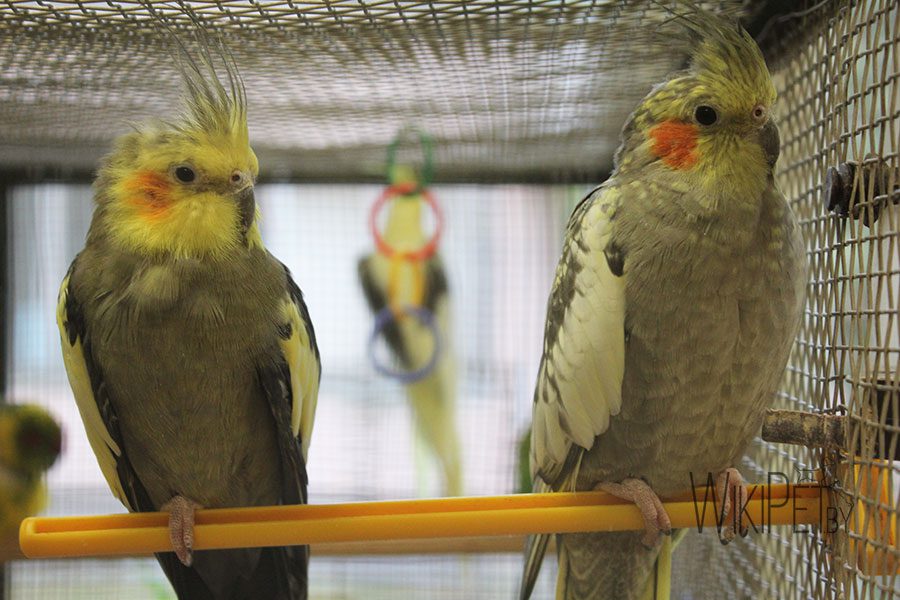
HABITAT AND LIFE IN THE NATURE CORELL
Cockatiels are quite numerous in the wild and live almost throughout Australia, preferring semi-arid regions. They can also be found in open areas, in acacia thickets, along river banks, in savannahs, along roads, in agricultural landscapes, in gardens and parks. Birds living in the north wander in search of food constantly, and those who live in the south are seasonal nomads.
The basis of the diet is acacia seeds and wild cereal grasses. They can also feed on buds, flowers and eucalyptus nectar, sometimes included in the diet of small invertebrates. They usually drink, landing on the water, taking a sip and immediately taking off.
BREEDING CORRELL
The breeding season is April-July in the north and August-September in the south. For nesting, cavities or hollows in old trees are chosen. The bottom is covered with chewed shavings, deepening the nesting chamber to the desired size. The female lays 3 – 7 oblong eggs. It is noteworthy that both partners incubate the clutch, alternately replacing each other. Sometimes they can split the number of eggs and incubate them at the same time. Eggs incubate for about 21 days. The chicks leave the nest at the age of weeks.
MAINTENANCE AND CARE OF CORELLA
Keeping a Corella parrot at home is quite simple, these birds are suitable even for a beginner. These are quite calm and peaceful parrots. How long do cockatiels live? With proper care and proper maintenance, these birds will delight you with their presence for up to 20 years. One of the most important criteria for keeping this species is the selection of the correct cage. The more it is, the better. The minimum cage size is 45x45x60 cm. The interval between the bars should be no more than 2,3 cm. If the interval is longer, the bird will be able to stick its head between the bars and get injured or even die.
The cage should be located in a bright room, without drafts and not in direct sunlight. Place the cage away from heating appliances, as dry air is detrimental to the health of birds. In terms of height, it is desirable to place the cage at the level of its chest so that the bird feels safe and not nervous when a person approaches.
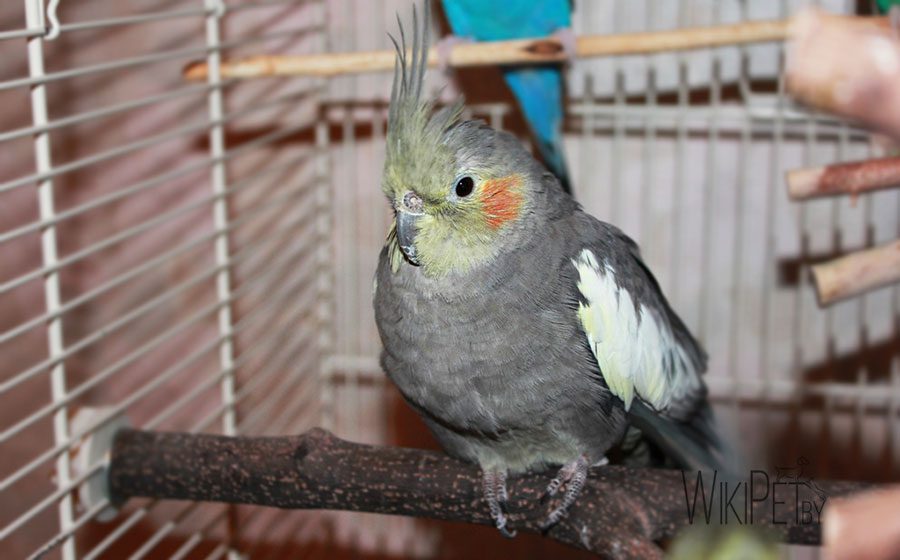
Perches with bark from permitted tree species must be installed in the cage. Perches should be of the appropriate diameter (2,5 – 3 cm). Outside the cage, you can place a play stand with toys, ropes, koshoshilki. However, if this is not possible, toys can also be placed in a cage, but you should not litter the cage and deprive the bird of the space it needs so much, everything should be in moderation. In the cage, in addition, there should be feeders, a drinking bowl, it’s good if you find a bathing suit that is suitable in size.
Caring for a cockatiel will not give you a lot of trouble – timely hygiene and proper nutrition are the key to health. Let the parrot out of the cage more often, let’s move more. Corella parrot at home is unpretentious and quickly gets used to a person.
How to tame a cockatiel parrot?
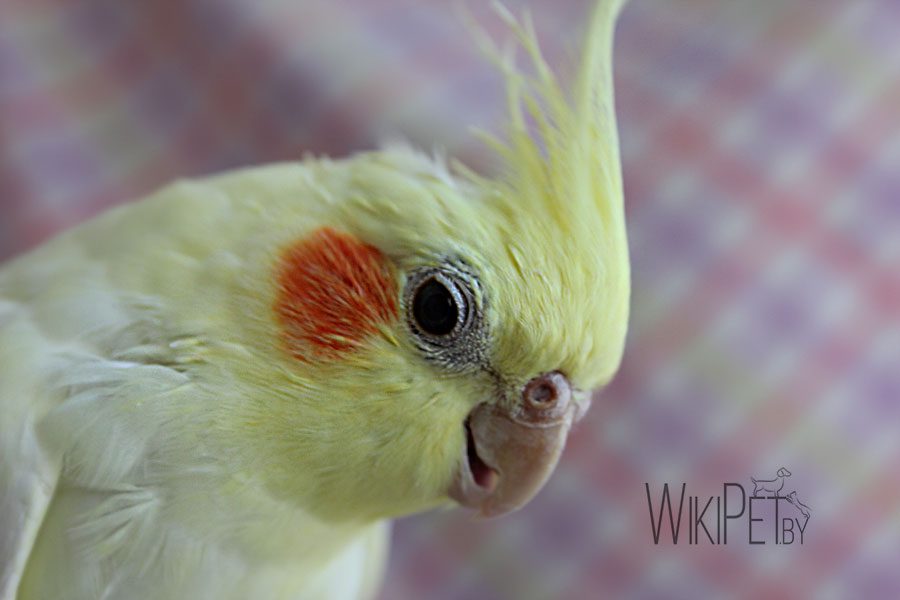
It is better not to start taming immediately after you brought the bird into the house. The parrot will have stress from a change of scenery, feed. Birds can beat on the cage with your sudden movements and approach. After placing the bird in the cage, behave calmly, do not make noise, do not wave your arms, all movements should be smooth, the voice should be calm and quiet. The parrot takes time to get used to. At first, he can just sit on the perch and not move, not eat, he may have liquid droppings. Provided that you bought a healthy bird, this is a normal process, it is called adaptation. 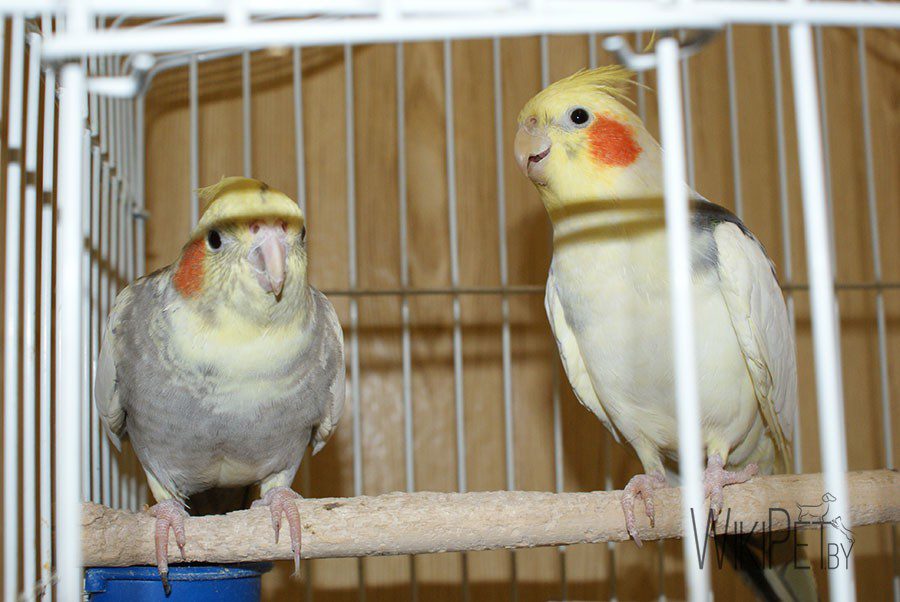
After the bird got used to it a little and began to eat, each time approaching the cage, talk to the bird, call its name. After a while, approaching the cage, briefly bring your hand to the cage, talking to the bird. When the parrot gets used to these manipulations, put your hand on the cage. After the bird gets used to seeing your hands and ceases to be afraid of them, you can begin to offer the bird a treat from your fingers through the rods. Use spikelets of Senegalese millet. If the bird took the treat, you are on the right track. The next step is to open the door and offer a treat from the palm of your hand.

All this time you need to gently talk to the parrot, you will not achieve anything with aggression. Be patient, the taming process can be quite lengthy. During taming, do not let the bird out of the cage. In the process of taming, you can train the bird to imitate your speech. However, the Corella parrot, unfortunately, does not speak as much and clearly as we would like. Their vocabulary is very modest – 15-20 words. However, these parrots repeat melodies and various sounds well.
FEEDING CORELLA
The basis of the diet should be grain feed. It should contain canary seed, millet, a small amount of oats and sunflower. Offer the birds germinated cereals, green food, branch food. Do not forget about vegetables and fruits allowed for birds. The cell should have sources of minerals and calcium – a large mineral mixture, chalk, sepia.
CORELL BREEDING
Corellas breed pretty well at home. In addition, for breeders there is a rather extensive field of activity. For breeding, it is necessary to select a pair of heterosexual birds at least 18 months old. How to determine the age of a cockatiel parrot? There are several tips. First, examine the bird – if it has a ring on its paw, the year of birth should be indicated. Usually, in an adult bird, the skin on the paws is darker, but this can only be seen in comparison. The color of the beak in young birds is also lighter, the crest in young birds is also not so luxurious, it has fewer feathers. The eyes of young birds are darker than those of adults. All this is quite difficult if you do not have experience, therefore it is better to purchase a bird for breeding from trusted breeders or in a nursery where birds are ringed with one-piece rings, and you can be sure of the parrot’s age.

In addition to age, pay attention to the health and condition of the birds, they must be moderately well-fed and not be relatives. If the couple has developed, it’s time to cook the birds. Diversify their diet, more soft food, germinated cereals, animal protein, greens and fruits, let them fly and swim a lot. Increase daylight hours. After 2 weeks and such preparation, hang the house. It should be with a minimum size of 30x35x30 cm, a notch of 8 cm. The house should have sawdust or shavings of hardwood trees.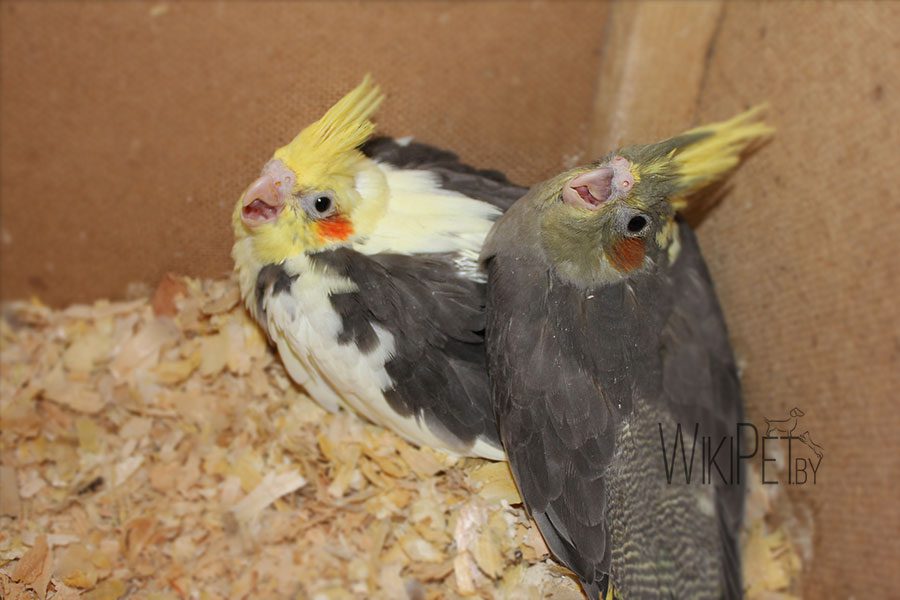
After laying the first egg, animal feed should be removed from the diet and added again when the firstborn is born. Both parents will incubate the clutch, do not disturb them, otherwise they may throw eggs. Watch that the partners do not show aggression towards each other and towards the chicks, otherwise it may end in failure. After the chicks leave the house and become independent, it is better to separate them from their parents.
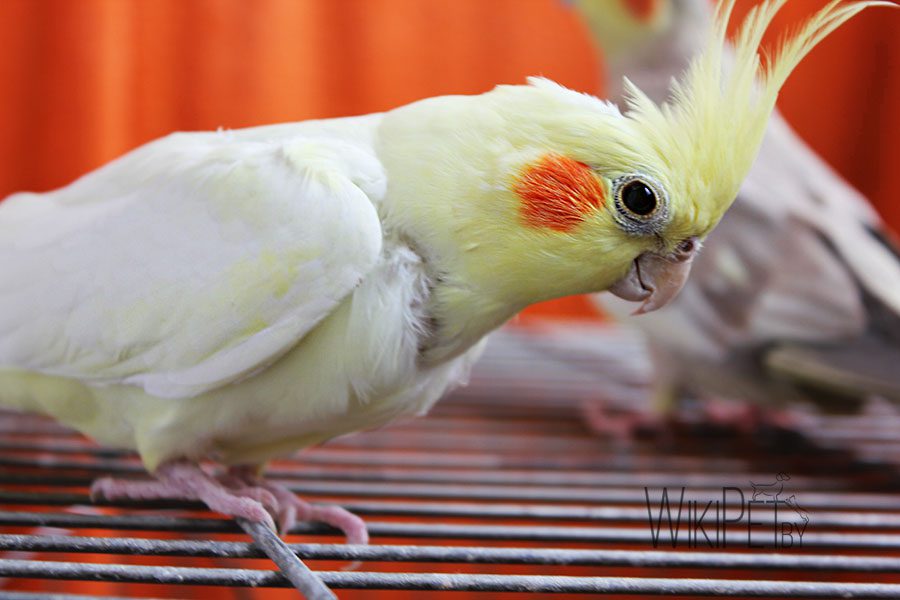 And so, after all, why would a Corella parrot be an excellent choice for a novice lover? This is an unpretentious and calm bird that is capable of learning. Corellas are not aggressive towards other types of parrots, they can be kept together with other species in a spacious aviary. They are not very noisy and require minimal conditions of detention. However, remember that these birds are subject to stress, all actions should be smooth, as there have been cases when birds died from harsh sounds or suddenly turned on lights, their heart simply stopped. Be attentive to their health, and they will delight you for a long time.
And so, after all, why would a Corella parrot be an excellent choice for a novice lover? This is an unpretentious and calm bird that is capable of learning. Corellas are not aggressive towards other types of parrots, they can be kept together with other species in a spacious aviary. They are not very noisy and require minimal conditions of detention. However, remember that these birds are subject to stress, all actions should be smooth, as there have been cases when birds died from harsh sounds or suddenly turned on lights, their heart simply stopped. Be attentive to their health, and they will delight you for a long time.



